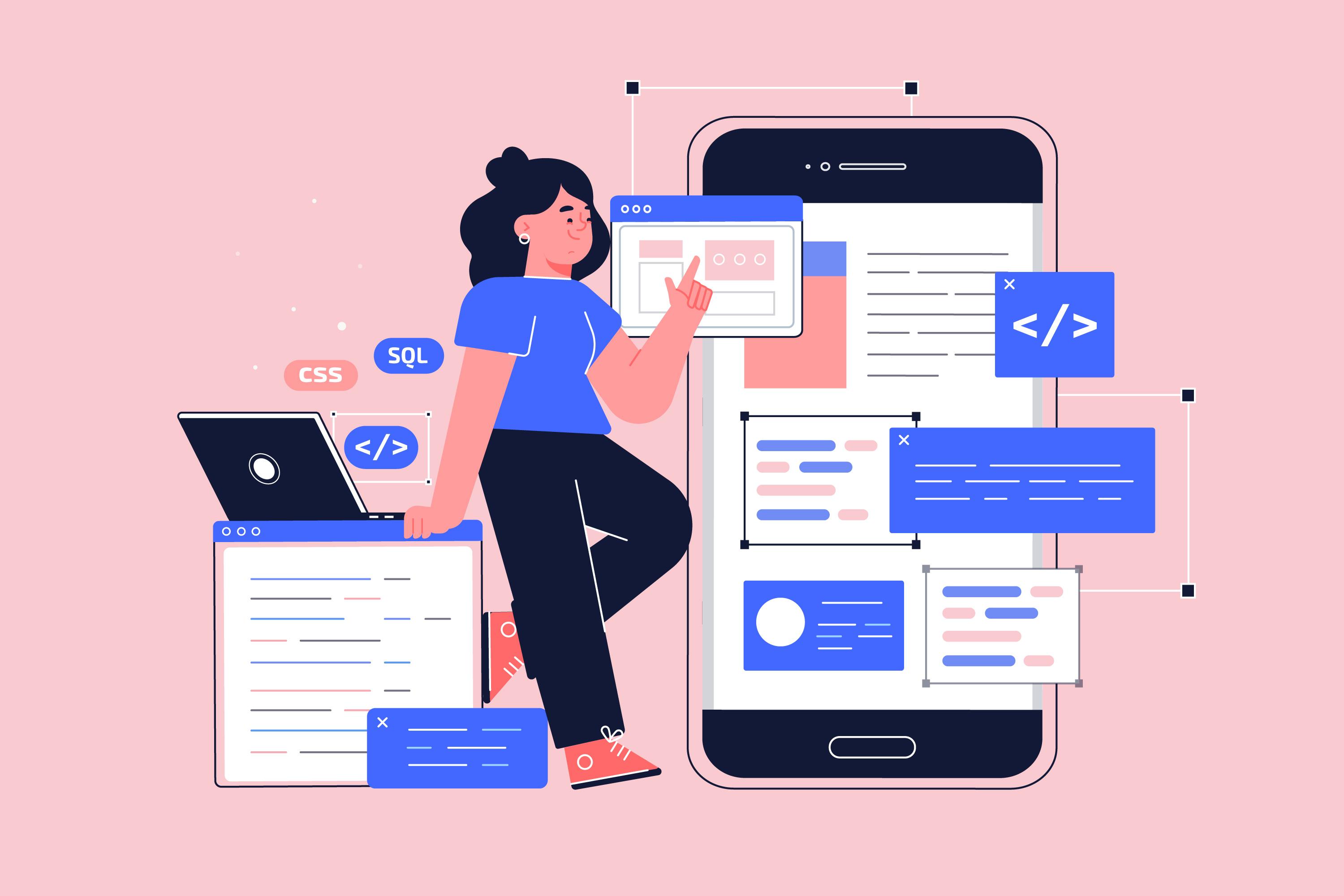A progressive web app, or PWA, means a type of website that works like a regular app on your phone or computer. You don’t need to download it from an app store. Just open it in your browser and use it like any other app. PWAs load fast, even if your internet is slow. They can also work when you’re offline. You can add them to your home screen and open them with one tap.
They look and feel like apps but live on the web. Many big companies use them to give users a simple and quick experience. PWAs are easy to use and don’t take up much space on your device. It’s like having an app without the extra steps.

Advantages of Progressive Web Apps
PWA programming is changing how people use the internet. They work like normal apps but live in your browser. You don’t need to download anything. You just open a website, and it feels like an app on your phone or computer. Many companies now use PWA software web app development to give people a quicker and easier way to use their services. Here are some progressive web app benefits:
- Works on any device. PWAs work on phones, tablets, and computers. It doesn’t matter if you use Android, iPhone, or a laptop. You get the same experience. This is helpful for businesses because they don’t need to make different apps for different devices.
- No app store is needed. You don’t have to go to the App Store or Google Play to get a PWA. You just visit a website and start using it. If you like it, you can save it to your home screen. It feels like a real app but skips the extra steps.
- Can work offline. One great thing about PWAs is they can work even without the internet. If the connection is weak or gone, you can still use parts of the app. This is helpful when you’re on the move or in places with bad signals.
- Quick to load. PWAs load faster than regular websites. They keep parts of the app stored in your device. So when you open it again, it loads in seconds. This saves time and makes it nicer to use.
- Saves space. Normal apps can take up a lot of space on your phone. PWAs don’t need much storage. You can use them without filling up your memory. This is good for people with older phones or less storage.
- Simple updates. You don’t need to download updates for PWAs. They update themselves in the background when you open them. You always see the latest version without doing anything.
- Works like a native app. Even though it runs in a browser, a PWA feels like a real app. It can send you notifications, use your camera, or even track your location (if you let it). Most people won’t even notice it’s not a regular app.
- Better reach for businesses. For companies, PWAs are cheaper and easier to build than making apps for both Android and iOS. Since they run in the browser, more people can use them. Businesses can reach more users with less effort.
PWA web development is a smart choice for both users and businesses. They’re easy to use, fast, and don’t take up much space. You get the feel of an app without the extra work. As more people use their phones to browse and shop, PWAs make things quicker and smoother. They’re a great way to enjoy the web with less hassle.

How to Make Your Web Apps Installable
Making your web app installable means people can add it to their phone or computer, just like a regular app. It gives them easy access with one tap or click. You don’t need to create a progressive web app for this. A few small changes to your website are enough.
An installable web app lets people save your website on their home screen or desktop. They can open it like any other app. It doesn’t open in a browser tab. Instead, it opens in a clean, app-like window, making the experience feel more natural and focused.
1. Use a Secure Website
First, your website needs to be safe. This means it should use a secure connection. If your web address starts with “https” and shows a little padlock icon, you’re good. If not, you’ll need to get a security certificate for your site. Many web hosting services give this for free. Without a secure site, most browsers won’t let users install your app.
2. Add a Web App Manifest
Think of the web app manifest as a small information file that tells browsers about your app. It includes things like your app’s name, a short name, the main page it should open, background color, and icons. It also says how the app should look when opened — like a regular app or in a browser tab. Once you create this file, you need to connect it to your website. This tells browsers, “Hey, this site is installable.”
3. Set Up a Service Worker
A service worker helps your app work offline and load faster. It’s like a smart helper behind the scenes. Even if your internet connection is weak or gone, your app can still open and show parts of the content. You don’t need to build anything fancy here. A very basic setup is enough to tell the browser your app is ready to be installed. You also have to register this helper in your website's settings.
4. Show Users an Install Option
Sometimes browsers will show a small message saying “Add to Home Screen” or “Install.” But not always. That’s why many web apps show their own message or button to let people know they can save the app. You can set this up so the message appears after the user visits your app a few times. This way, they are more likely to say yes to installing it. It’s all about helping people find and use your app more easily. The easier it is, the more likely they’ll come back.
5. Use App Icons
When someone adds your app to their device, it will show an icon. This is what people will tap or click to open it. Make sure you provide a few different icon sizes so they look nice on all screen types — phones, tablets, and computers. Clear, simple icons work best. Use something that matches your brand or service.
Examples of Installable Web Apps
Many companies already use installable web apps. Here are a few popular progressive web application examples:
- Twitter Lite – A lighter version of Twitter that works well even with slow connections.
- Pinterest – Their web app gives a great mobile experience and doesn’t use much storage.
- Spotify – The music platform lets users install its web app, which looks and works like the regular desktop version.
- Forbes – This news site offers fast loading and lets readers view articles offline.
These examples of progressive web apps work without needing to visit an app store. They open quickly, feel smooth, and don’t take up much space. Making your web app installable is a smart way to give users a better experience. You don’t need a full mobile app. You just need a secure site, a short setup file (called a manifest), and a basic helper in the background (the service worker).

Progressive Web App Features
Progressive web apps are websites that feel more like apps. They are designed with special features that make them more powerful than normal websites.
Works in a Web Browser
Progressive web apps framework opens right in your browser, like any other website. You don’t need to download them from an app store. Just go to the website, and it works. Whether you’re using Chrome, Safari, or Firefox, the app runs inside the browser.
Can Be Added to the Home Screen
PWA technology can be saved to your phone or desktop screen with just one tap. After that, the icon sits on your home screen like any regular app. When you click it, the app opens on its own, not inside a browser tab.
Opens in App-Like Window
When you launch a PWA, it doesn’t show browser tools like the address bar or back button. It opens in a clean window, just like a mobile app or desktop program. This makes it feel more natural and easy to use.
Works Offline or in Poor Connection
After the first time you visit, PWA technology can still work even if your internet is gone. It keeps some of the apps saved on your device. So, if you're on a train or in an area with a bad signal, you can still open it and use parts of it.
Push Notifications
PWAs can send updates or messages straight to your screen, even if the app isn’t open. This is called push notifications. It’s a way for the app to let you know about new content, sales, reminders, or anything else you choose to get.
Automatic Updates
PWAs always stay up to date. Each time you open it, the app checks if there is a new version and updates itself quietly in the background. You don’t need to press any buttons or wait for downloads.
Works on Any Device
PWAs are made to work on all screen sizes and systems. Whether you have a phone, tablet, or laptop, the app fits your screen and works the same way. It doesn’t matter if you’re using Android, iOS, or a computer.

Requires HTTPS
PWAs only run on secure websites. That means the site has a lock icon in the browser address bar. This helps keep your connection safe and private while using the app.
Uses App Icons
A PWA software includes its own app icon. When you add it to your home screen, you’ll see a custom image — not just a browser shortcut. This makes it look like a real app and helps you find it easily.
Background Support
Even when the app isn’t open, a PWA technology can still do things like check for updates or send you a message. It runs small tasks quietly in the background without bothering you.
Works Without Installation
You don’t have to install a PWA if you don’t want to. It still works fine just by visiting the website. This makes it easy to try out the app before deciding to keep it on your screen.
Progressive web apps mix the best parts of websites and regular apps. Their features make them flexible, light, and easy to use. From working offline to sending notifications, these PWA best practices give users a smooth and app-like experience — right from the browser.
The answers to your questions
How to build a Progressive Web App?
Start with a simple website. Then add a web app manifest, which includes the app’s name, icon, and start page. Next, set up a service worker so it can work offline and load faster. Your site must also use HTTPS to be secure. That’s it — your web app can now be installed.
What is a progressive web app example?
Twitter Lite is a popular example. You can open it in your browser, save it to your home screen, and use it like the full app. Other examples include Pinterest, Spotify Web, and Forbes.
Is progressive web app the future?
Many think so. PWAs are easy to use, work on all devices, and don’t need app stores. More companies are using them, so it’s likely they’ll grow even more.
What is the difference between a web app and a progressive web app?
A regular web app runs in a browser tab and needs the internet all the time. A PWA works offline, can send notifications, and can be added to your home screen. It feels more like a real app.
